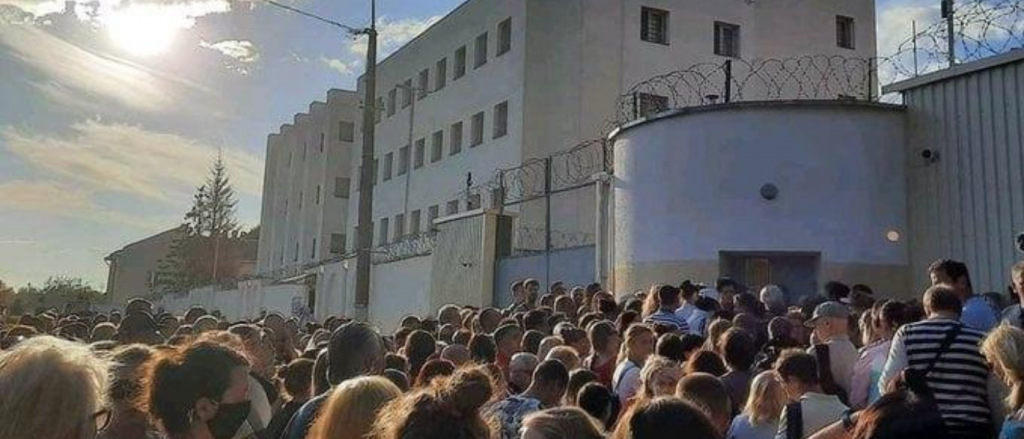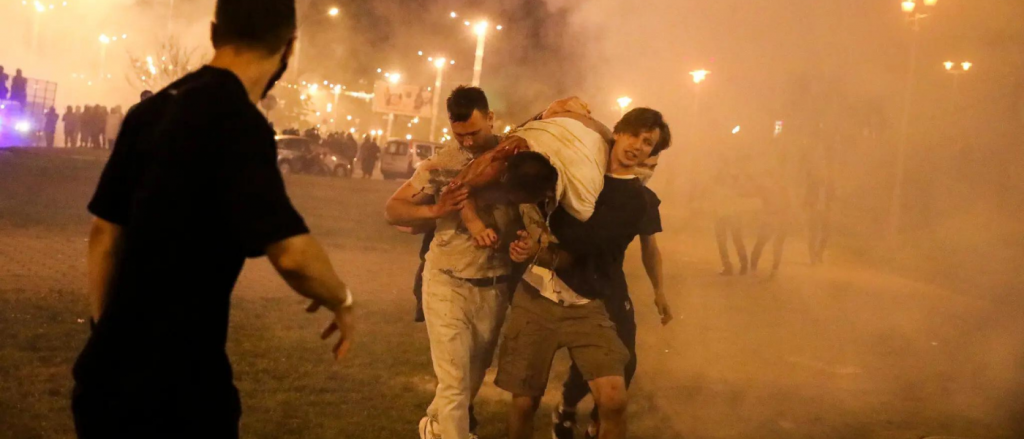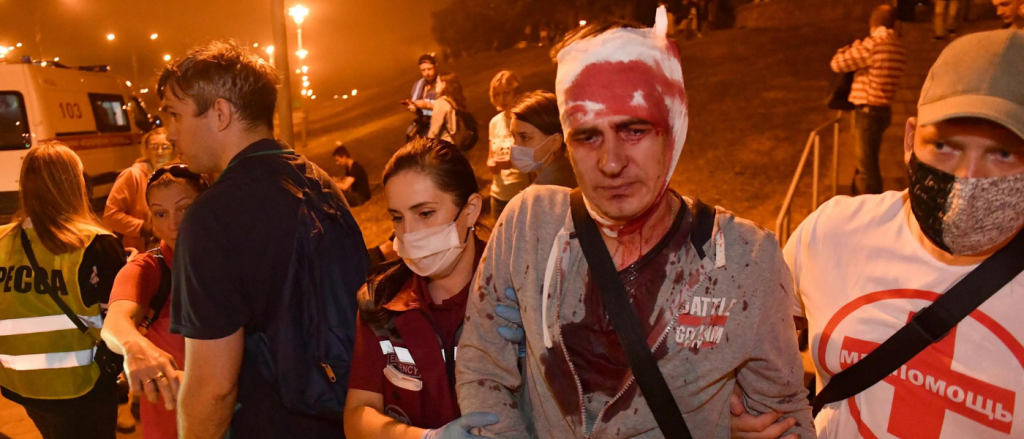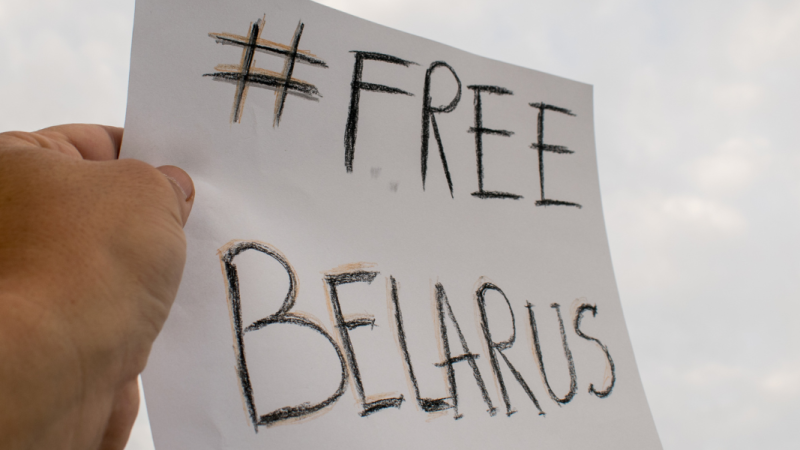«You will die here». Testimonies of the Prisoners of Akrestina

After the fraud of the presidential elections on August 9, 2020, mass peaceful protests began in Be- larus. The response of the regime was the use of weapons, stun grenades, and tear gas by the se- curity forces. Security forces massively detained and beat protesters. Unjustified brutality against peaceful demonstrators continued after the arrests.
Among the detainees, there were not only direct participants in the protests. The security forces also grabbed minors, elderly people, people with disabilities, as well as bystanders.
The detained in the city were taken to various departments of internal affairs. In Minsk, the main place of detention of detainees was the Center for Isolation of Offenders of the Main Internal Affairs Direc- torate of the Minsk City Executive Committee, located at 1st lane Akrestina, 36 (hereinafter referred to as the CIP).
The common name “Akrestina” has been associated in Belarus for many years with illegal detentions of citizens for political reasons. This place has become a symbol of the torture of civilians who disagree with electoral fraud, participants in the protests in 2020-2022.

For five days (August 9–14, 2020), more than three thousand detainees passed through the detention center, designed to hold 110 people.
All detainees were subjected to humiliating procedures during placement in the detention center, severe beatings, and were kept in inhuman conditions in overcrowded cells without food and water for two or more days. People were beaten at any attempt to find out their status, to demand their rights and medical assistance. CIP officers and security forces from the OMON took part in the beatings of the detained people (watch the video with testimonies of the detainees).
On August 13, 2020, Belarusian human rights activists appealed to the Minister of the Ministry of Internal Affairs Yury Karaev with a demand to stop torture in the detention center and other places of detention and to investigate cases of torture.
The deputy head of the Ministry of Internal Affairs of Belarus, Alexander Barsukov, at first stated that “there were no cases of torture”. The next morning, he clarified that “no one was beaten in the cells”.
Simultaneously with such statements, the detainees continued to be beaten, as evidenced by numerous pieces of evidence, including in the form of audio recordings.
On the night of August 12-13, relatives of detainees in the Akrestina detention center recorded the sounds of incessant beatings, which were clearly audible on the street. On the recordings, the voices of people can be heard screaming loudly in pain and begging for mercy.
On August 14, detainees began to be released en masse. Some were taken out in ambulances. Those who were released showed their wounds and injuries from torture.

This report of the International Committee for the Investigation of Torture in Belarus is based on the information from the testimonies of 101 victims (1095 pages of documents) who were held at the CIP between 9 and 14 August 2020 in the 1st lane of Akrestina, 36 in Minsk. For the purposes of publication, many of the witnesses were interviewed additionally. Also, the experts of the International Committee for the Investigation of Torture in Belarus carefully studied the medical and other documents provided by the interviewees.
This publication describes, in chronological order, the stay of the detainees in the CIP, as well as the conditions in which they were held. The focus is on the main locations: the courtyard of the CIP, where people were unloaded from paddy wagons; walking yards, where they were kept for 2-3 hours or more until they were distributed to cells (some stayed there for several days); cells and corridors of the CIP. In any place of the detention center, people faced severe beatings, psychological pressure, and insults from the staff of the detention center (including medical workers), as well as security forces from other units of the country’s law enforcement system.
The detainees testify to the incredible overcrowding of the cells in which they were kept, unsanitary conditions, and the absence of elementary toilet and hygiene items, drinking water, and food for several days, despite the established norms and rules of detention.
By deliberately keeping people in overcrowded cells at the height of the Covid-19 pandemic, the CIP staff endangered their health and lives. The sick and those in need of constant medication, as well as the injured and wounded, did not receive emergency medical care, which resulted in serious consequences for the health of many of them. Emergency medical assistance to detainees was called in exceptional cases.
The detention conditions in the detention center are regarded by the experts of the International Committee for the Investigation of Torture in Belarus as cruel, and in some cases, these conditions reached the level of torture.
Massive beatings and psychological and physical abuse by law enforcement officers, including detention center employees, accompanied the detainees throughout their stay in the isolation ward.
The speedy trials that took place in the building of the CIP did not meet the principles of a fair trial.

People were not given the opportunity to get acquainted with the protocols of detentions, in many cases the information in them was incorrect and fictitious. They refused to provide a lawyer, sometimes they beat people for this demand.
Under such circumstances, the actions of the security forces such as OMON and employees of the CIP of the Main Internal Affairs Directorate of the Minsk City Executive Committee in relation to the detained people, reflected in this report, are criminal both under domestic and international law.
An analysis of the interviews of the victims and additional interviews to identify the security officers made it possible to identify some officials of the CIP who took part in the torture and ill-treatment of detainees.
Due to the ongoing repression of the victims, the report does not give their real names and surnames and avoids descriptions that can be used to identify people. Quotes from interviews with victims in the document are in italics.
This publication is another documentary evidence of crimes against humanity committed by the regime after the presidential elections in the Republic of Belarus in August 2020.
It should be noted that the cruel conditions of detention in the detention center and the attitude towards detainees, which can be compared with torture, have practically not changed from August 2020 to the present (February 2023). This is confirmed by numerous testimonies of victims who served administrative arrests in this institution in 2021–2023.
One of the egregious examples of torture against detainees is the fact of abuse of human rights activist Nastya Loiko, who stated in court that on November 11, 2022, one of the CIP employees took her to the patio and left her without outerwear for eight hours. As a result of this, Nasta became very ill.



